East coast storm surge: What happened next?
- Published
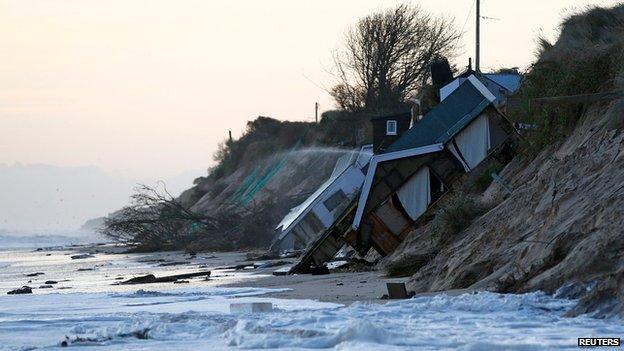
Seven cliff-top homes collapsed in Hemsby on the night of the worst storm surge for 60 years
A year ago the biggest tidal surge since 1953 battered the east coast of England, flooding communities from Yorkshire to Kent and causing millions of pounds worth of damage. What happened next to the hardest hit areas?
Many villagers in Hemsby, on the Norfolk coast, were in the pub on the night of 5 December 2013, when seven houses were lost to the sea.
Smartly dressed for a fundraising event, they were collecting money to invest in sea defences they believe could have prevented the large-scale destruction they were to witness that night.
"The weather was bad, it wasn't cold but it was very windy and the sea seemed very high," said Ian Brennan, who lives in the village and is chairman of the Save Hemsby Coastline group. "We thought nothing of it."
The fundraiser at the Lacon Arms was in full swing when news reached them that a bungalow about 100m away was collapsing over the edge of the sand dunes.
"Probably about 40 or 50 of us went out," Mr Brennan said. "We tried to help the people out of the homes that were being washed away and we tried to save their belongings.
"The base of the water was maybe 20ft higher than normal, with waves 15ft above that.
"Houses that earlier in the day were 40 to 50ft away from the edge were now under threat and being washed away."
.jpg)
Residents formed a human chain to help salvage items from homes in Hemsby

Hundreds of homes in Lincolnshire were also evacuated during the tidal surge
One house went over the edge of the sandy cliffs "like it had been launched like a ship", Mr Brennan said.
"It absolutely was like a disaster movie. I've never seen anything like it."
People who had been dressed in suits and smart dresses for the fundraiser were grabbing whatever they could from the collapsing homes and taking it to the temporary refuge of the pub.
At one point an overhead cable snapped free from a pole and swung towards Mr Brennan, narrowly missing him.
Several of the residents stayed there all night, helping out where needed.
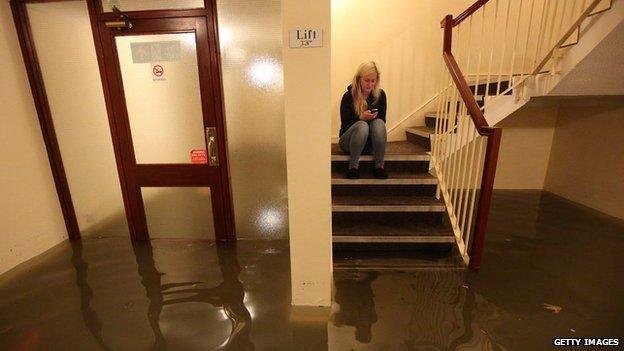
Flats in Boston were flooded
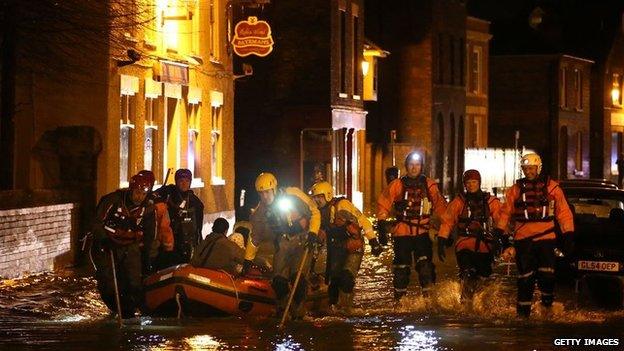
Some families had to be rescued by boat on Boston High Street
Hemsby was not alone. Along the East coast of England, about 1,400 homes were flooded in the worst storm surge for 60 years.
About 500 homes in Kent and 600 in Lincolnshire were evacuated, while 400 homes in the Humber area were affected. In Suffolk, the town centre in Lowestoft was flooded, while in Essex, all 2,500 homes in Jaywick were evacuated.
In Boston, Lincolnshire, about 50 roads were submerged as the banks of the River Haven burst. It was the worst flood to hit the town in 60 years. Some people are still living in temporary accommodation.
More than a foot of water surged into St Botolph's Church, causing damage that will cost about £1m to fix.
Farmer Hugh Drake, who lost 25 acres of land to the water, said it was the worst day of his life.
"I don't think I've ever known such a feeling of shock and apprehension and fear," said Mr Drake.

Hugh Drake has lost 25 acres to the sea and he cannot grow crops on a large section of his land
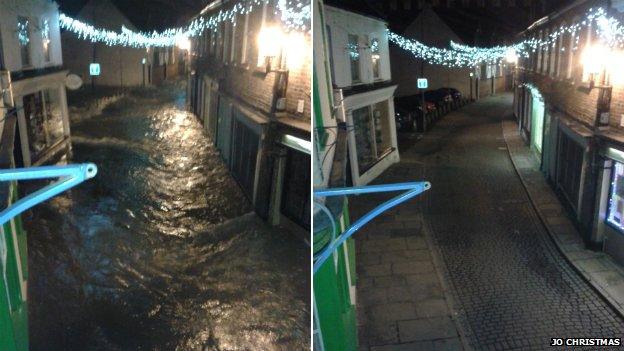
Ironically, the Bizzarro restaurant in Boston was hosting a Venice themed night on 5 December 2013. The image on the right shows how the street outside the restaurant looks now
It will be two years before he is able to grow crops again on the flooded area because of the high levels of salt.
"I shudder to think what the actual cost is in terms of lost production," he said.
At the Taste of Venice night at the Bizzarro Italian restaurant people thought the reports of flooding on 5 December were a joke.
"I'm ringing my customers saying don't come in, we're flooded," said Jo Christmas, co-owner of the restaurant in Wormgate in the town centre. "'Oh very funny', they said."
And in East Yorkshire, the events will live long in the memory of Caroline Cattle. As flood water poured into her house, in Yokefleet, near Goole, she was also given the news that her father had suffered a heart attack.
"Each time I get a text alert about high tide I keep relieving it, thinking it could happen again," she said.
"I get panic attacks. I'm panicking all the time."
Her father, 90, survived and has now recovered.
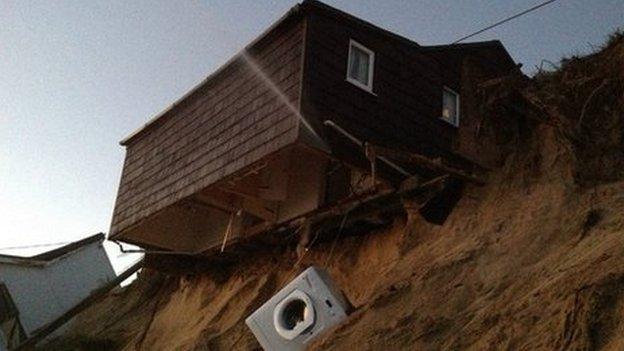
Ray Mooney was still in his house in Hemsby when it started to be washed away
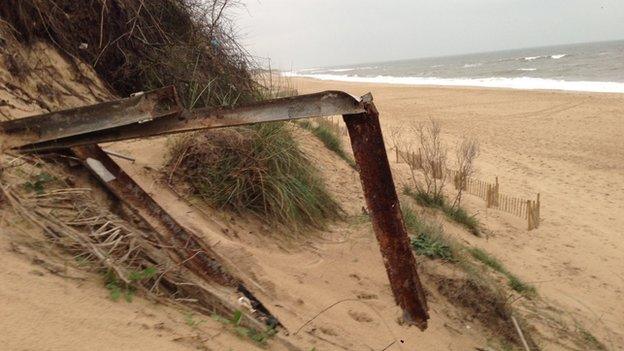
Remains of the houses can still be seen on Hemsby beach
Back in Hemsby, villagers speak of how the community has "clubbed together" after the floods but many also face an uncertain future.
Patrick Taylor moved into his bungalow six months before the tidal surge. It is metres away from the edge of the cliff, but was undamaged during the tidal surge.
"I was obviously aware that the east coast is going under water, but I was thinking it was more like 20 to 30 years," Mr Taylor said.
"I don't think anybody has actually categorised which homes are at risk and which aren't, but sooner or later the dune will go. I can't see any way that that's not going to happen.
"Some people are saying it could be next year, or it could be within five years, which is obviously a bit more concerning."

A naked calendar and T-shirts have been produced to help raise money for Hemsby's coastal defences
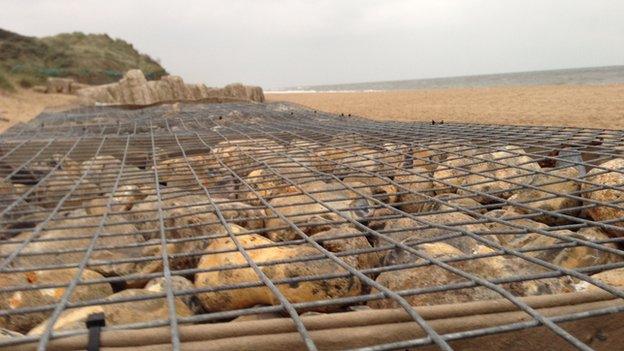
Several pilot sea defence schemes have been placed along the beach, with the help of residents
He said more help was needed from the government to prevent further losses.
How long people will have the choice to keep on living where they are remains to be seen.
"The village will fight together, if something happens we'll all pull together and come through it," he said.
"But we're losing our village inch by inch everyday and we just need action."

Learning from the Dutch
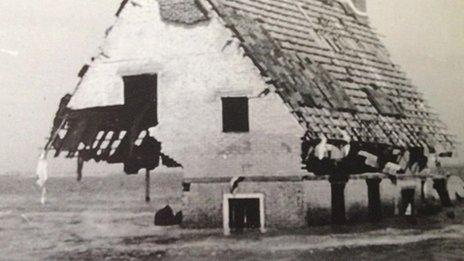
The Netherlands improved flood defences after 1,836 people died in 1953
Richard Daniel, BBC Look East Environment Reporter
While villagers in Hemsby try to prevent more homes being washed away, it's a very different story just over a hundred miles away in Holland. With 40% of their country below sea level, the Dutch refuse to let the sea win.
Unlike the British, they think long-term. Isolated rural communities in Zeeland, which were devastated in the 1953 tidal surge, are now protected from a 1 in 4,000 year flooding event. Unlike the British, sea defence funding is guaranteed until 2026.
If bureaucrats in Holland allowed defences to deteriorate, let alone fail, they would probably end up in prison. The need to defend the coast is enshrined in law. 85% of the money needed each year is raised locally through water boards with elected representatives. People pay according to the size and value of the asset being protected.
Contrast that with the UK, where funding is centrally-managed and depends more on the political cycle. In the UK defences often fail or deteriorate before action is taken.
Meanwhile, the Dutch constantly check and maintain their defences. And if they have to sacrifice land, as they are considering doing at the moment because of river flooding, they compensate those affected.

- Published2 December 2014
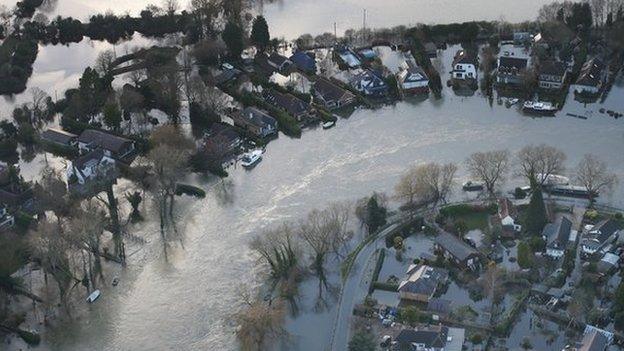
- Published5 December 2014
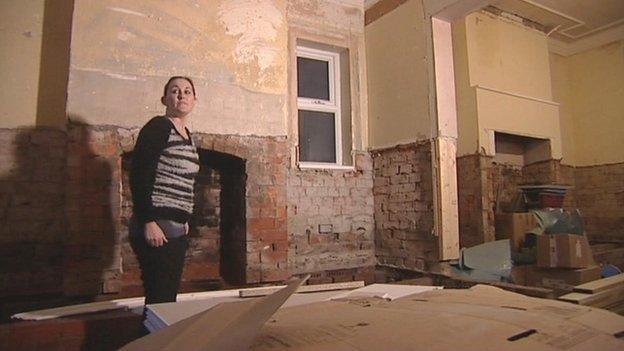
- Published5 December 2014

- Published24 July 2014
.jpg)
- Published18 July 2014
.jpg)
- Published15 February 2014
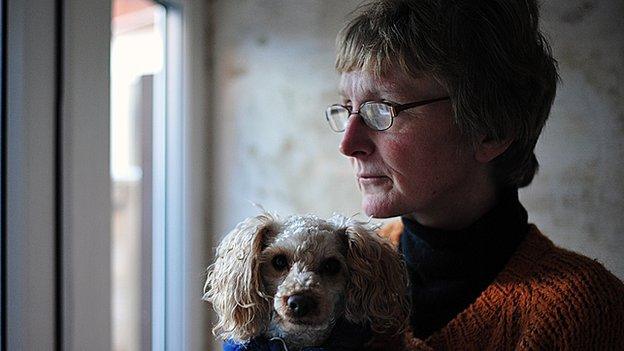
- Published7 December 2013

- Published6 December 2013
- Published5 December 2013